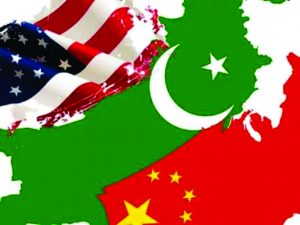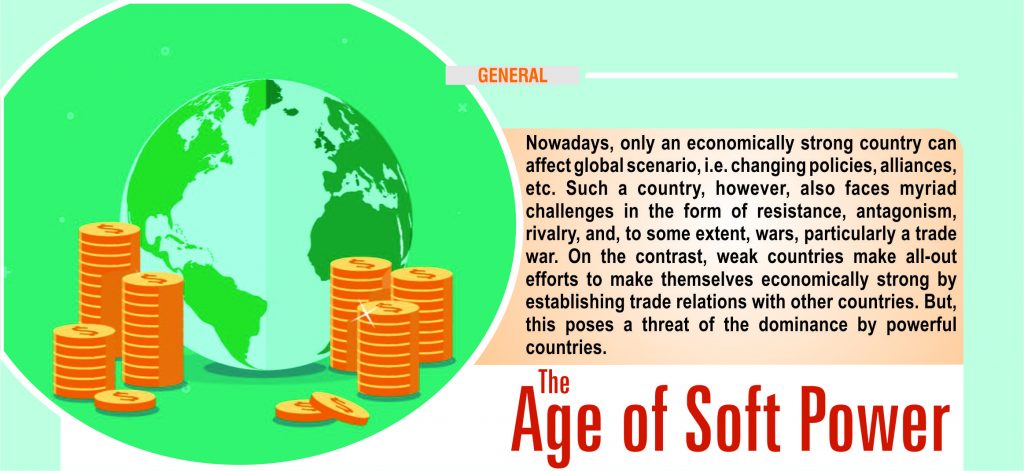The Age of Soft Power
A ccording to power theory of international relations (IR), there are two types of power; one is ‘hard power’ which denotes ‘military might’, and the other is ‘soft power’ which indicates ‘natural resources’ which contribute to a nation’s economy. Many countries have acquired hard power through several means. Although it may be enough to win a war for many countries, they do not possess soft power (they are economically weak). For instance, Pakistan is a nuclear power, but its economy is not strong and it always needs foreign aid. On the other hand, the United States, Russia and China possess nuclear power and are economically formidable powers as well.
Since World War I, the United States has maintained its supremacy over the world; in first phase, through military capability and weaponry strength, and by the dint of its strong economy in the second. But during the last two decades, the rise of two other powers, i.e. Russia and China, has become a nightmare for the world’s top economy. Russia, the exporter of technology, and China, the rising power and an economic giant, are the rivals of the US that are challenging its dominance, especially in the Asian region.
Globalization has provided a platform for trade and promoted interdependence among the nation-states. Owing to this, the US will hesitate to opt the way of war as it will jeopardize its economy, and prosperity and also exhaust its military might. Russia’s provision of new weapons and China’s economic projects have taken over the region which is ultimate challenge to the US. This all is due to growing economic prowess of Beijing and Moscow.
 Pakistan, being a developing country that is still economically weak, has been seeking assistance from its neighbour, i.e. China, and from the US. Since 1947, the country has been a good friend and supporter of the USA and it got both military and financial support as well. But in the 21st century, China, an all-weather friend, became the new supporter of Pakistan in the region. The rise of China is being considered a threat for the US, and Pak-China relationship has impacted the connection between Pakistan and the United States.
Pakistan, being a developing country that is still economically weak, has been seeking assistance from its neighbour, i.e. China, and from the US. Since 1947, the country has been a good friend and supporter of the USA and it got both military and financial support as well. But in the 21st century, China, an all-weather friend, became the new supporter of Pakistan in the region. The rise of China is being considered a threat for the US, and Pak-China relationship has impacted the connection between Pakistan and the United States.
The game of shifting alliances has started, despite embittered memories of Cold War and war in Afghanistan. Russia also found in Pakistan a big ally and started building trade relations with it and also conducting bilateral military exercises. On the other hand, the US established military as well as economic ties with India so as to create a threat for China – also a threat to Pakistan’s sovereignty.
Under the US auspices, India is trying to become the regional hegemon in South Asia, and is also trying to challenge China in the region. Recent India-China standoff is the result of India’s growing economy and the US support. The US backed India’s activities to create unrest in the region which is detrimental to China’s investments in multipurpose projects and also peace of the region. But the dream of becoming the regional hegemon instigates India to be in conflict with China.
To cap it all, along with military might, having economic prowess is also of great importance. The country which is more prosperous and economically stronger, is powerful. According to the theory of realism in IR “a country’s power is crucial in determining the outcomes of a conflict and also to influence other countries.” From this statement, it is clear that power is main thing in global affairs. In other words, power is the guarantee for the preservation of a country and its ability to influence other states.
The writer is a law graduate.
 Jahangir's World Times First Comprehensive Magazine for students/teachers of competitive exams and general readers as well.
Jahangir's World Times First Comprehensive Magazine for students/teachers of competitive exams and general readers as well.



